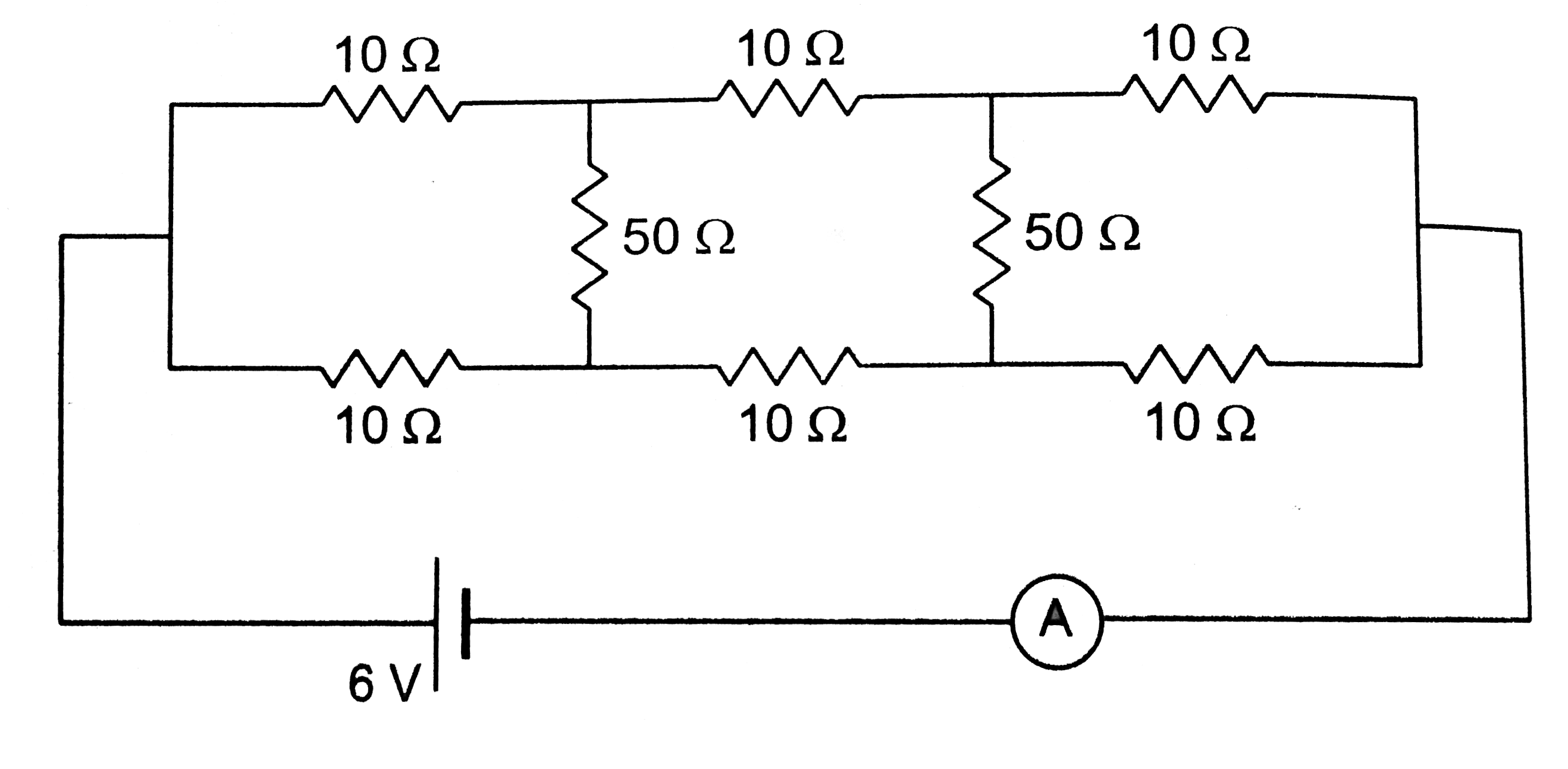A : If a current has both ac and dc components, then a dc ammeter used to measure this current will measure the average value of the total current.
R : The scale of a dc ammeter is uniformly divided.
If both Assertion & Reason are true and the reason is the correct explanation of the assertion, then mark (1)
If both Assertion & Reason are true but the reason is not the correct explanation of the assertion, then mark (2)
If Assertion is true statement but Reason is false, then mark (3)
If both Assertion and Reason are false statement, then mark (4)
The correct Answer is:B
To solve the problem, we need to analyze both the assertion (A) and the reason (R) provided in the question.
Step 1: Understand the Assertion (A)
The assertion states that if a current has both AC (Alternating Current) and DC (Direct Current) components, a DC ammeter will measure the average value of the total current.
- Explanation: A DC ammeter is designed to measure the average value of the current flowing through it. When both AC and DC components are present, the DC component contributes to the average value, while the AC component, which oscillates around zero, averages out to zero over time.
Step 2: Understand the Reason (R)
The reason states that the scale of a DC ammeter is uniformly divided.
- Explanation: A DC ammeter is calibrated to provide a linear response to the current flowing through it. This means that for every equal increment of current, the reading on the ammeter increases uniformly. This characteristic allows for a straightforward interpretation of the readings.
Step 3: Analyze the Relationship Between A and R
Now we need to determine if the reason (R) correctly explains the assertion (A).
- Analysis: While both statements are true, the reason does not provide a direct explanation for the assertion. The assertion is about how a DC ammeter measures the average current when both AC and DC components are present, while the reason discusses the uniformity of the scale of the ammeter, which is a separate characteristic.
Conclusion
- Assertion (A): True
- Reason (R): True
- Relationship: The reason does not explain the assertion.
Thus, the correct answer is that both assertion and reason are true, but the reason is not the correct explanation of the assertion.
Final Answer
Both assertion and reason are true, but the reason is not the correct explanation of the assertion.
---
The assertion states that if a current has both AC (Alternating Current) and DC (Direct Current) components, a DC ammeter will measure the average value of the total current.
The reason states that the scale of a DC ammeter is uniformly divided.
Now we need to determine if the reason (R) correctly explains the assertion (A).
- Assertion (A): True
- Reason (R): True
- Relationship: The reason does not explain the assertion.
Both assertion and reason are true, but the reason is not the correct explanation of the assertion.
Similar Questions
A DC ammeter cannot measure alternating current because
View SolutionName the instrument used to measure the current in an electric circuit.
View Solutionwhen the speed of a dc motor increase the armature current
View SolutionCan a hot-wire ammeter be used to measure a direct current having a constant value? Do we have to change the graduation?
View SolutionFind the current measured by the ammeter in the circuit shown in figure

View SolutionIn the circuit shown in figure the current measured by ammeter is

View SolutionAn dielectric current has both DC and AC components . DC component of 8 A and AC component is given as I = 6sinomegat. So (rms)(I) value of resultant current is
View Solution(A) : A tangent galvanometer is used for measuring current.
(R) : Tangent galvanometer reads current directly.
View SolutionA current is made up of two components 3 A dc component and ac component given by I=4sin(ω)tA. The effective value of current is
View SolutionIf reading of an ammeter is 10 A, the peak value of current is
View Solution
